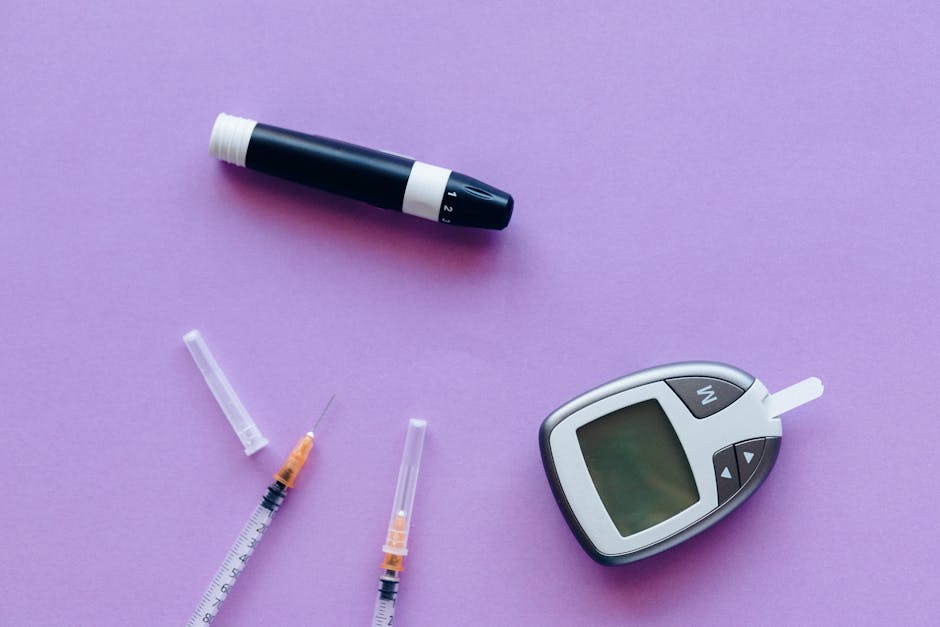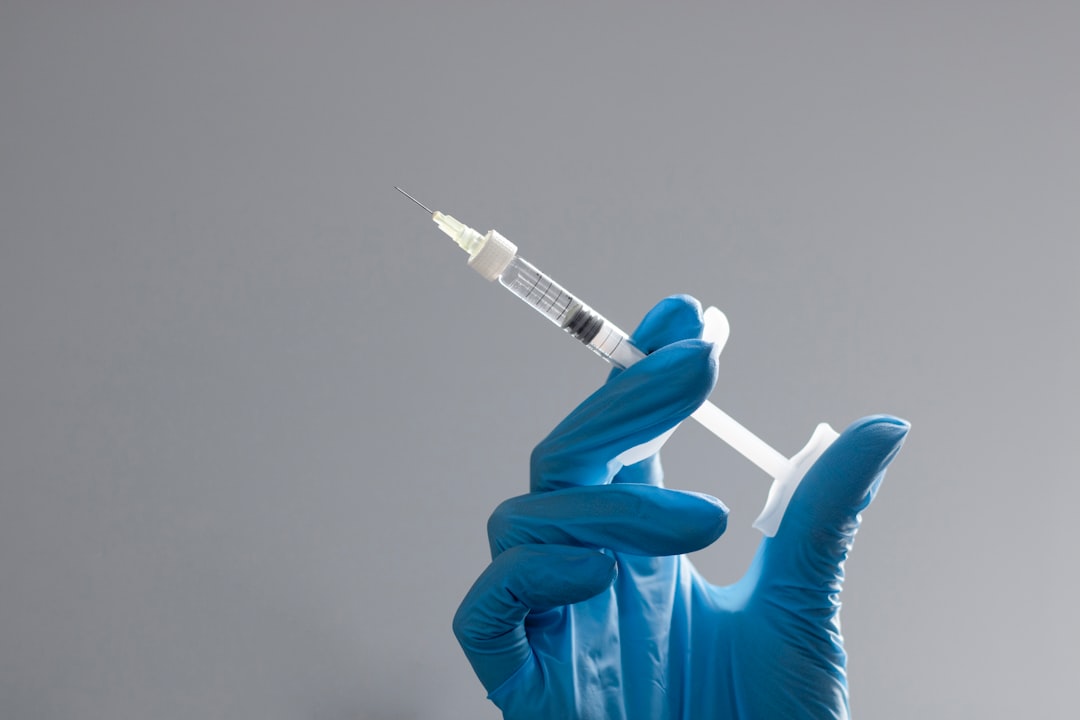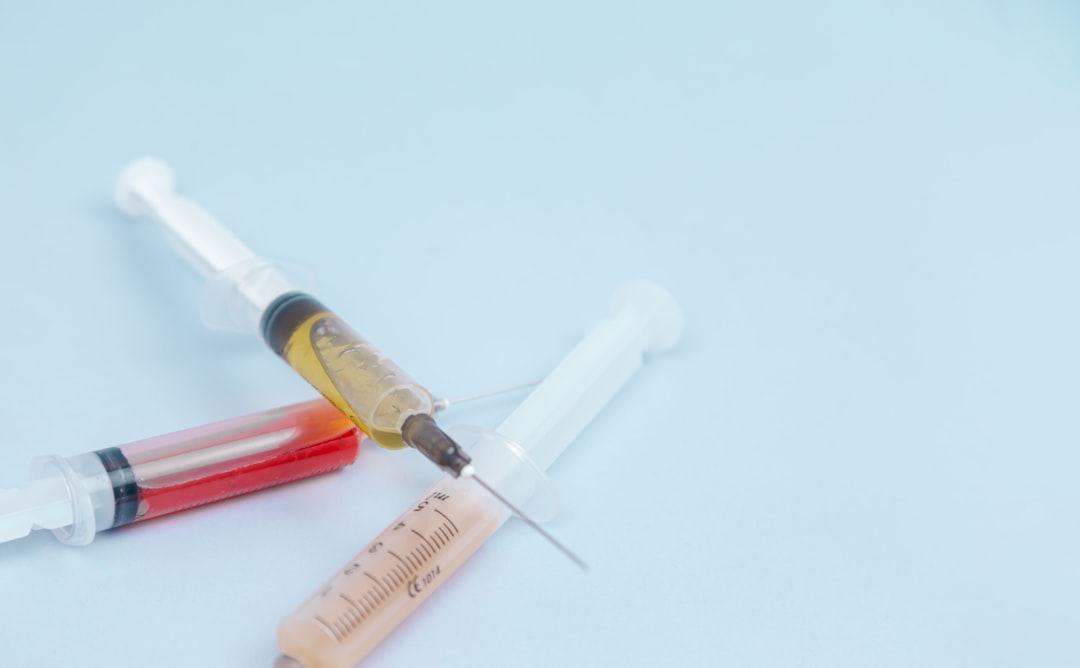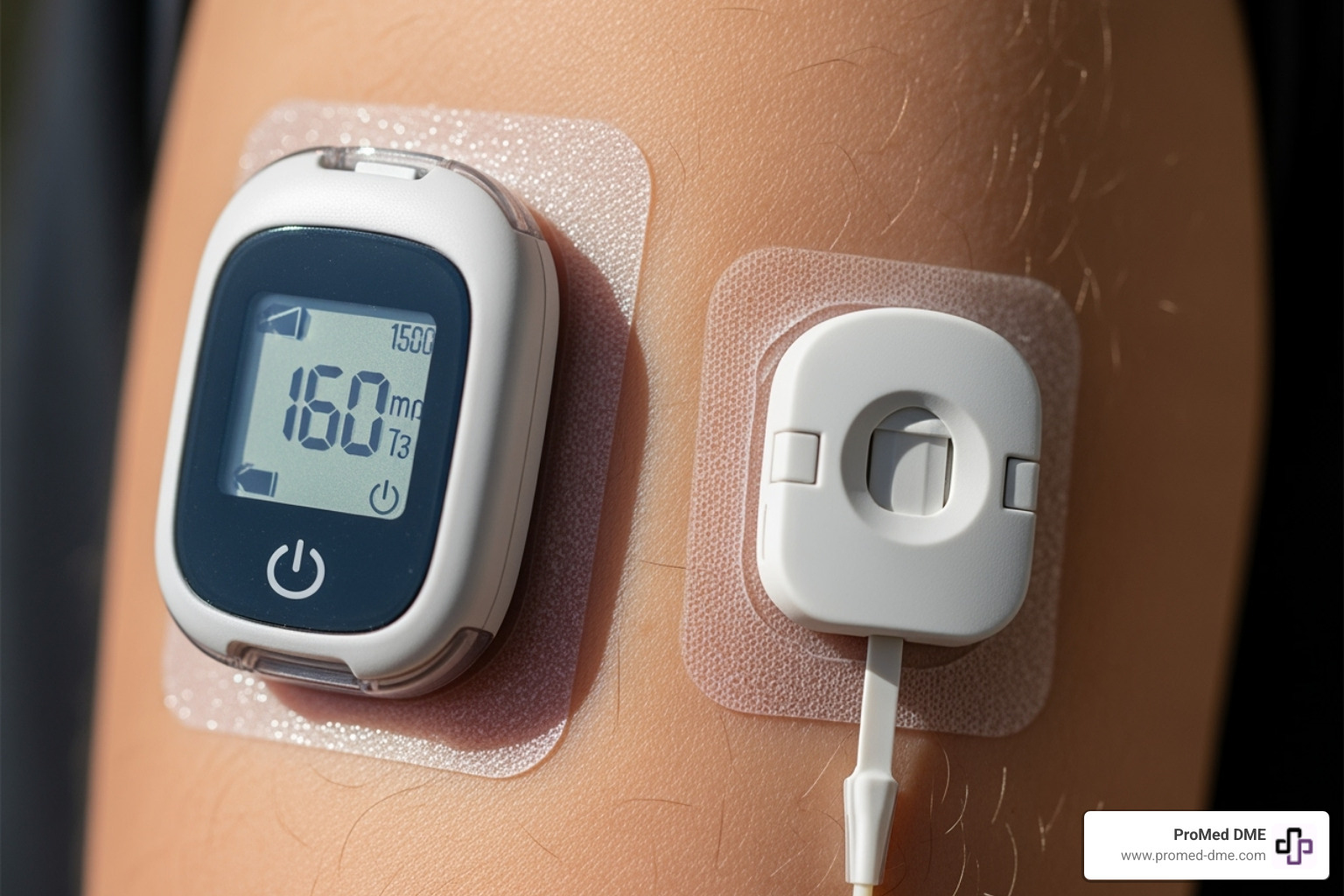All About Blood Glucose Monitoring: Your Complete Resource

Do fluctuating blood sugar levels keep you on edge? If you're grappling with managing your diabetes or other related health conditions, understanding and keeping tabs on your blood sugar levels can be daunting but is highly essential. Welcome to our comprehensive guide on blood glucose monitoring, your vital tool for optimal health and wellbeing.
For anyone managing diabetes or pre-diabetes, blood glucose monitoring is not just a routine - it's their first line of defense. It provides the much-needed insights into how diet, exercise, medication, and even your emotions, affect your blood glucose levels. This crucial information helps you and your healthcare team adjust your treatment protocols, making informed decisions to maintain your blood sugar within the recommended range.
Managing blood glucose levels is a bit like trying to keep a ball bouncing within a designated zone. Too high, and you risk long-term complications like eye, kidney, and nerve damage; too low, and you may face immediate threats like confusion, unconsciousness, or a seizure. So, staying in that ‘zone’ is crucial for your overall health - and that's where blood glucose monitoring comes into play.
By the end of this introduction, you'll learn:
- What is blood glucose monitoring: A procedure that regularly measures the amount of sugar (glucose) in your blood.
- Why it's important: Regular monitoring helps manage diabetes, prevent complications, and track progress towards the treatment goals.
- Who it's for: Ideal for individuals with type 1, type 2, or other forms of diabetes that require insulin.
Keep reading to learn everything you need to know about different types of blood glucose monitors, steps to use them, and how to interpret and record your results for effective diabetes management.

Understanding Blood Glucose Levels
Before we delve into the specifics of blood glucose monitoring, let's first understand what the different levels of blood glucose mean and why they are important. Blood glucose, often referred to as blood sugar, is measured in either millimoles per liter (mmol/L) or milligrams per deciliter (mg/dL).
Normal Range for Blood Glucose
The normal range for blood glucose is typically between 4 to 6 mmol/L or 72 to 108 mg/dL. These levels indicate that your body is functioning normally in terms of processing glucose from the food you eat, transforming it into energy, and maintaining a healthy balance.
Impaired Fasting Glucose Range
There's also a range referred to as the impaired fasting glucose range. This is a state where your fasting blood glucose levels are higher than normal, but not high enough to be classified as diabetes. The levels for impaired fasting glucose range are 5.7 to 6.4 mmol/L or 100 to 125 mg/dL.
If your blood glucose falls within this range, it's a sign that your body is not processing glucose as efficiently as it should. It could be a precursor to type 2 diabetes, making it crucial to monitor your glucose levels regularly and make necessary lifestyle changes.
Blood Glucose Levels Indicating Diabetes and Prediabetes
A blood sugar level less than 140 mg/dL (7.8 mmol/L) is normal. A reading of more than 200 mg/dL (11.1 mmol/L) after two hours indicates diabetes. Meanwhile, a reading between 140 and 199 mg/dL (7.8 mmol/L and 11.0 mmol/L) indicates prediabetes. Prediabetes is a condition where your blood sugar levels are higher than normal but not high enough to be classified as type 2 diabetes.
Understanding these blood glucose levels and what they imply is the first step towards effective blood glucose monitoring. At ProMed DME, we believe knowledge is power. The more you know about your blood glucose levels, the better positioned you are to manage your diabetes effectively and prevent potential complications.
In the next section, we will explain the importance of regular blood glucose monitoring and how it plays a pivotal role in the management of diabetes.
Importance of Regular Blood Glucose Monitoring
Regular blood glucose monitoring is the cornerstone of diabetes management. It's not just about keeping an eye on your blood sugar levels; it's about understanding your body's response to food, exercise, and medication, and making informed decisions for your health. Let's delve deeper into the role of regular blood glucose monitoring in managing diabetes, preventing complications, and tracking progress towards treatment goals.
Role in Managing Diabetes
In managing diabetes, knowledge is power. Regular blood glucose monitoring provides real-time insights about your blood sugar levels, and this information can greatly influence your day-to-day decisions. For example, it can inform you if your blood sugar is too high after a meal, prompting you to adjust your diet or medication.
Regular monitoring is especially important for patients using insulin therapy. As our resources have explained, insulin therapy can cause hypoglycemia if not managed effectively. By regularly monitoring blood sugar levels, patients can better manage their insulin doses and avoid potential hypoglycemia events.
Preventing Complications
Regular blood glucose monitoring not only helps manage diabetes, it also plays a crucial role in preventing complications. Uncontrolled blood sugar levels can lead to both acute and chronic complications, from diabetic ketoacidosis to nerve damage and cardiovascular disease. By regularly monitoring your blood glucose, you can identify patterns and make necessary adjustments to prevent these complications.
For instance, with the help of continuous glucose monitoring devices like the Dexcom G6 and G7, you can receive real-time alerts when your blood sugar is too high or too low. This immediate feedback can help you take preventative measures, reducing the risk of potentially life-threatening complications.
Tracking Progress Towards Treatment Goals
The ultimate goal in managing diabetes is to maintain your blood glucose levels in your target range as much as possible. Regular monitoring allows you to track your progress towards your treatment goals. It can serve as a form of feedback, highlighting the effectiveness of your current treatment plan and indicating when changes may be necessary.
Each person's diabetes management plan is unique and what works for one person may not work for another. Regular blood glucose monitoring can provide the personalized data you need to fine-tune your treatment plan and better manage your diabetes.
In conclusion, regular blood glucose monitoring is an essential part of diabetes management. It plays a pivotal role in managing your condition, preventing complications, and tracking your progress towards your treatment goals. At ProMed DME, we understand the importance of having reliable, accurate, and user-friendly blood glucose monitoring devices. That's why we offer top-of-the-line CGM systems to support you in your diabetes management journey.
Different Types of Blood Glucose Monitors
To effectively manage diabetes, it's crucial to choose a blood glucose monitoring device that suits your lifestyle and specific needs. There are two main types of monitors available: blood glucose meters and continuous glucose monitors (CGMs).
Blood Glucose Meters
Blood glucose meters are portable electronic devices that measure blood sugar levels using a small drop of your blood. These are essential tools for individuals with diabetes, as they help to maintain an accurate record of blood sugar levels, thus facilitating better diabetes management and prevention of complications.

To use a blood glucose meter, you typically prick your finger with a small, sharp needle (called a lancet) to get a tiny drop of blood. You then place the blood on a test strip that's inserted into the meter, which calculates your blood sugar level.
Continuous Glucose Monitors
Continuous Glucose Monitors (CGMs) are a more advanced tool for blood glucose monitoring. These devices estimate your blood glucose levels throughout the day by reading glucose in the fluid between your cells. A sensor attached to your body sends this information to a device like a smartphone or an insulin pump. Some CGMs can even send alerts if your blood glucose levels get too high or too low.

CGMs are particularly beneficial for individuals with type 1 diabetes, type 2 diabetes, or any other forms of diabetes that require insulin. They provide real-time glucose readings, allowing you to make informed decisions regarding diet, exercise, and medication.
Choosing the Right Monitor for Your Needs
Selecting the right blood glucose monitor depends on several factors, including your specific health needs, your lifestyle, and your personal preferences. For instance, if you prefer a more traditional method, a blood glucose meter may be the best choice. However, if you're looking for constant monitoring with real-time data, a CGM could be a better option.
At ProMed DME, we're dedicated to helping you navigate these options and choose the best blood glucose monitoring system for your needs. We provide resources like our comprehensive guide on CGM System Comparison to help you make an informed decision.
Successful diabetes management is not a one-size-fits-all approach. It involves finding the right tools and strategies that work best for you. Blood glucose monitoring is a crucial part of this process, and we're here to support you every step of the way.
How to Use a Blood Glucose Monitor
Monitoring blood glucose is an essential part of managing diabetes. Whether you're new to this or need a refresher, here's a step-by-step guide on how to use a blood glucose meter properly.
Steps for Using a Blood Glucose Meter
- Hand hygiene: Start by washing and drying your hands well. Any food or other substances on your hands might affect the reading.
- Prepare the meter: Insert a test strip into your meter as per the device's instructions.
- Prick your finger: Use the lancet provided with your test kit to prick the side of your fingertip.
- Apply blood to the test strip: Touch and hold the edge of the test strip to the drop of blood.
- Read the result: After a few seconds, the meter will display your blood glucose level on a screen.
Remember to use test strips designed for your meter and avoid using expired test strips. Some meters can test blood taken from alternate sites, like the forearm or palm, but these readings may not be as accurate as those from the fingertips.
Proper Hygiene Practices
Proper usage and maintenance of your blood glucose meter are crucial to get accurate results. Here are some hygiene practices to follow:
- Clean the device as directed in the user's guide.
- Store test strips as directed.
- Run quality-control checks as directed.
- Bring the meter to your healthcare provider's appointments to address any questions and to show how you use your meter.
Understanding and Recording Your Results
Understanding and recording your results is key to effective diabetes management. Discuss with your healthcare provider about how often you need to record your blood sugar results.
If you manually log your results, record the date, time, test results, medication and dose, and diet and exercise information. Bring your record of results with you to your healthcare provider's appointments.
If you get frequent results that don't fall within your target goals' range, consult your healthcare provider about the necessary steps to take.
At ProMed DME, we care about your health and aim to offer you the best solutions for managing diabetes. Understanding how to use a blood glucose monitor is an important step in this journey. If you have any questions about blood glucose monitoring or need assistance, contact us. We're here to help.
Recommendations for Blood Glucose Monitoring
Navigating blood glucose monitoring can be complex, but we at ProMed DME are here to simplify it for you. We understand that everyone's needs and conditions are unique, and the frequency of monitoring and target blood sugar ranges can vary based on individual circumstances. Here are some general recommendations for blood glucose monitoring.
Frequency of Monitoring Based on Type of Diabetes and Treatment Plan
The frequency of blood glucose checks largely depends on the type of diabetes you have and your current treatment plan. As per CDC's guidelines, if you have type 1 diabetes, you might need to check your blood glucose levels several times a day. For those with type 2 diabetes, the frequency can vary, and it's best to follow your healthcare provider's advice. More frequent monitoring can help provide valuable insights about your blood sugar patterns, helping you make necessary adjustments to your diabetes care plan.
Target Blood Sugar Ranges
The American Diabetes Association (ADA) provides standard target ranges for individuals diagnosed with diabetes. However, these ranges can vary based on your age, health, diabetes treatment, and whether you have type 1 or type 2 diabetes. Always follow your healthcare provider's recommendations for your personal blood sugar goals. Consistent and regular blood glucose monitoring can help you better understand your body's response to different factors like food, activity, and medication, and keep your numbers within your target range more often.
The Role of A1C Testing in Monitoring Blood Glucose
A1C test is another crucial component of blood glucose monitoring. Unlike regular self-monitoring of blood glucose which gives you a snapshot of your blood sugar levels at a specific time, an A1C test provides an average of your blood sugar levels over the past three months. The ADA recommends getting an A1C test at least twice a year. However, your doctor might advise more frequent testing based on your condition and treatment goals.
Regular and accurate blood glucose monitoring is the cornerstone of managing diabetes. It empowers you to take charge of your health and make informed decisions about your diabetes care plan. At ProMed DME, we're committed to supporting you in this journey with our range of blood glucose monitoring solutions. Reach out to us today for personalized assistance and guidance.
Making Adjustments to Your Diabetes Care Plan Based on Blood Glucose Monitoring
After you've become accustomed to regular blood glucose monitoring and understand your results, it's time to use this information to enhance your diabetes management. This often involves making adjustments to your diabetes care plan, which may include changes in diet, exercise, medication, and lifestyle habits.
When to Consult Your Healthcare Provider
While we at ProMed DME provide the tools you need for effective blood glucose monitoring, medical advice should always come from your healthcare provider. If you notice consistent patterns in your blood glucose levels that concern you, it's time to get in touch with your doctor. For example, if your results are frequently above or below your target range, or they fluctuate wildly without apparent reason, these could be signs that your diabetes care plan needs to be adjusted.
Equipped with questions and your blood glucose data, your healthcare provider can help interpret these patterns. They might ask questions like: - What is the pattern showing in my blood sugar levels? - Do these patterns suggest a need to change my diabetes treatment? - What adjustments need to be made to my diabetes care plan?
It's crucial to have an open line of communication with your healthcare provider. They form an integral part of your care team and can provide valuable insights into managing your diabetes.
Importance of Collaboration with Your Healthcare Team
Managing diabetes effectively is a team effort. Besides your primary healthcare provider, your team might include endocrinologists, diabetes nurse educators, dieticians, and pharmacists. At ProMed DME, we're also part of that team, offering support in your journey of diabetes management with our range of blood glucose monitoring solutions.
Team collaboration is essential to ensure that all aspects of your care plan align and support your overall health goals. Your healthcare team can help identify specific challenges you might be facing, assist in interpreting your blood glucose data, and provide tailored advice to improve your diabetes management.
In conclusion, regular blood glucose monitoring is a powerful tool in managing diabetes. By understanding your blood glucose levels, recognizing when to consult your healthcare provider, and collaborating with your healthcare team, you can make informed decisions that improve your diabetes management and overall health.
Conclusion: The Role of Blood Glucose Monitoring in Effective Diabetes Management
In the journey of diabetes management, blood glucose monitoring plays an indispensable role. It's a compass that navigates you through the complex terrain of blood sugar fluctuations, helping you maintain a balance and avoid the extremes of hypo and hyperglycemia.
Implementing a systematic blood glucose monitoring regime empowers you to stay on top of your diabetes management. It's like having a real-time feedback system, informing your decisions and actions about food, exercise, and medication. This proactive approach not only helps in preventing acute or chronic complications but also improves overall health outcomes.
As we've discussed, continuous glucose monitoring (CGM) devices, such as the ones offered by us at ProMed DME, like the Dexcom G6 and Dexcom G7, have revolutionized diabetes management. They provide real-time blood glucose monitoring, helping prevent hypo and hyperglycemia, and have been linked to improved diabetes outcomes.
Monitoring blood glucose is not a solitary task. It requires a collaborative approach involving you, your healthcare provider, and your support system. At ProMed DME, we understand this and extend our assistance beyond providing top-of-the-line CGM systems. We offer guidance and support in using these tools effectively, ensuring you get the best possible results from your diabetes management plan.
In the end, the goal of blood glucose monitoring is to improve your quality of life. By taking control of your blood glucose levels, you take control of your health, reducing the risk of diabetes-related complications and enjoying a healthier, happier life.
For more information on blood glucose monitoring and ways to effectively manage your diabetes, explore resources like our comprehensive guide about CGM devices or get in touch with our nurse-on-call for personalized advice and support.
You're not alone in this journey. Together, we can navigate the challenges of diabetes and work towards better health and wellbeing.
Related Resources & Articles
Stay informed with our informative blog posts.
Discover the ProMed Advantage
& Try Our Products
We offer free shipping and legendary customer service to ensure you receive the
best DME products for your needs.




